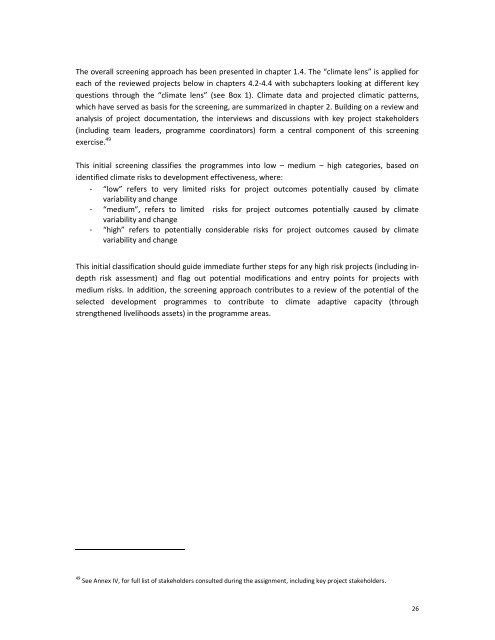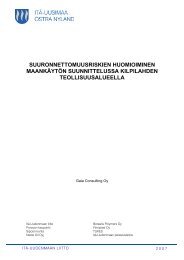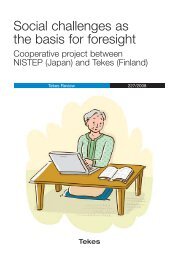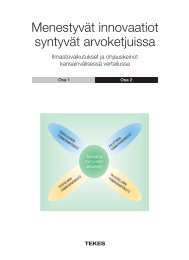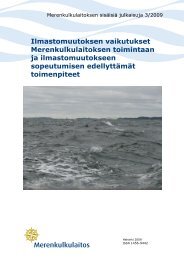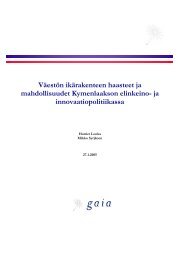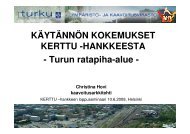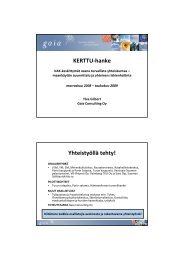Climate Risk Management in Finnish Development Cooperation - Gaia
Climate Risk Management in Finnish Development Cooperation - Gaia
Climate Risk Management in Finnish Development Cooperation - Gaia
You also want an ePaper? Increase the reach of your titles
YUMPU automatically turns print PDFs into web optimized ePapers that Google loves.
The overall screen<strong>in</strong>g approach has been presented <strong>in</strong> chapter 1.4. The “climate lens” is applied for<br />
each of the reviewed projects below <strong>in</strong> chapters 4.2-4.4 with subchapters look<strong>in</strong>g at different key<br />
questions through the “climate lens” (see Box 1). <strong>Climate</strong> data and projected climatic patterns,<br />
which have served as basis for the screen<strong>in</strong>g, are summarized <strong>in</strong> chapter 2. Build<strong>in</strong>g on a review and<br />
analysis of project documentation, the <strong>in</strong>terviews and discussions with key project stakeholders<br />
(<strong>in</strong>clud<strong>in</strong>g team leaders, programme coord<strong>in</strong>ators) form a central component of this screen<strong>in</strong>g<br />
exercise. 49<br />
This <strong>in</strong>itial screen<strong>in</strong>g classifies the programmes <strong>in</strong>to low – medium – high categories, based on<br />
identified climate risks to development effectiveness, where:<br />
- “low” refers to very limited risks for project outcomes potentially caused by climate<br />
variability and change<br />
- “medium”, refers to limited risks for project outcomes potentially caused by climate<br />
variability and change<br />
- “high” refers to potentially considerable risks for project outcomes caused by climate<br />
variability and change<br />
This <strong>in</strong>itial classification should guide immediate further steps for any high risk projects (<strong>in</strong>clud<strong>in</strong>g <strong>in</strong>depth<br />
risk assessment) and flag out potential modifications and entry po<strong>in</strong>ts for projects with<br />
medium risks. In addition, the screen<strong>in</strong>g approach contributes to a review of the potential of the<br />
selected development programmes to contribute to climate adaptive capacity (through<br />
strengthened livelihoods assets) <strong>in</strong> the programme areas.<br />
49 See Annex IV, for full list of stakeholders consulted dur<strong>in</strong>g the assignment, <strong>in</strong>clud<strong>in</strong>g key project stakeholders.<br />
26


